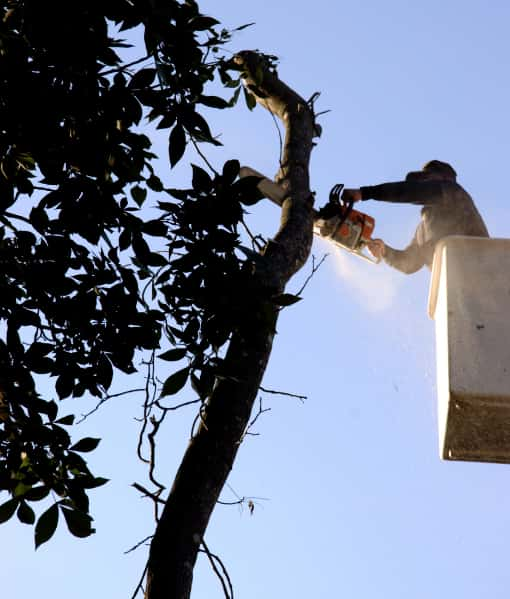Pruning is essential for maintaining the health, shape, and safety of trees, but timing is critical to ensure optimal results. Different species and types of trees benefit from pruning at specific times of the year, allowing them to recover quickly and continue growing healthily. At Eye Tree Surgeons, we offer expert tree care services in Eye, Suffolk, tailored to the needs of each tree and the local environment. In this blog, we’ll outline the best times of year to prune various types of trees, ensuring they remain vibrant and healthy throughout their lives.
1. Deciduous Trees – Late Winter to Early Spring
Deciduous trees, which lose their leaves in autumn, are best pruned during late winter or early spring, when they are still dormant. This timing allows for easy access to branches and a clear view of the tree’s structure.
- Ideal Timing: February to early March, before new growth begins.
- Why It’s Effective: Pruning during dormancy minimises sap loss and reduces stress on the tree. It also encourages vigorous new growth in spring, making this period ideal for structural shaping and removing any weak or crossing branches.
- Examples: Oak, maple, birch, and ash.
Pruning deciduous trees in late winter ensures they enter the growing season with a strong, balanced structure, which is essential for their long-term health.
2. Evergreen Trees – Late Spring to Early Summer
Evergreen trees, which retain their foliage year-round, require a different approach to pruning. They should generally be pruned in late spring to early summer, after the initial flush of growth.
- Ideal Timing: Late May to early July, once new growth has emerged.
- Why It’s Effective: Pruning in late spring helps maintain the shape and size of the tree without sacrificing too much growth. This timing also allows cuts to heal quickly, reducing the risk of disease.
- Examples: Pine, spruce, and fir.
Evergreens benefit from lighter pruning to preserve their natural shape, and timing it correctly ensures they stay healthy and full throughout the year.
3. Flowering Trees – Immediately After Blooming
Flowering trees are typically divided into two categories: those that bloom in early spring and those that bloom later in the year. For best results, each should be pruned shortly after they finish flowering.
- Early-Blooming Trees: These should be pruned immediately after blooming to prevent cutting off next year’s flower buds. This timing allows the tree to direct its energy toward new buds for the following season.
- Ideal Timing: April to early May.
- Examples: Cherry, magnolia, and forsythia.
- Late-Blooming Trees: Prune these trees in late winter, as they set buds on new wood during the growing season.
- Ideal Timing: February to March.
- Examples: Crape myrtle and hawthorn.
Pruning flowering trees at the right time preserves their bloom cycle, ensuring vibrant displays year after year.
4. Fruit Trees – Late Winter to Early Spring
Fruit trees require careful pruning to promote healthy growth and maximise fruit production. Most fruit trees benefit from pruning in late winter to early spring, similar to deciduous trees.
- Ideal Timing: February to early March, before the buds break dormancy.
- Why It’s Effective: Pruning during dormancy encourages a robust structure that can support fruiting branches and allows sunlight and airflow to reach all parts of the tree. This timing also minimises sap loss and encourages new growth for a healthy harvest.
- Examples: Apple, pear, plum, and cherry.
Proper timing and techniques are essential for fruit trees, as they directly affect the tree’s productivity and the quality of the fruit.
5. Hedges and Shrubs – Mid to Late Summer
Although not technically trees, hedges and large shrubs are often a significant part of the landscape and require regular maintenance to retain their shape and health. Pruning hedges in mid to late summer keeps them tidy and encourages a dense, attractive form.
- Ideal Timing: July to August.
- Why It’s Effective: Mid-summer pruning allows hedges and shrubs to recover and develop strong growth before autumn, ensuring they retain their shape and density throughout the winter.
- Examples: Boxwood, privet, and laurel.
Regular pruning helps hedges maintain a clean appearance, creating defined boundaries and providing privacy in the garden.
6. Young Trees – Formative Pruning in Early Years
Young trees benefit from formative pruning to establish a strong, balanced structure that will support them as they grow. This process usually takes place during the first few years after planting.
- Ideal Timing: Late winter to early spring, similar to deciduous trees.
- Why It’s Effective: Formative pruning focuses on removing weak or competing branches to create a strong main structure. Timing it before the growing season allows young trees to focus their energy on developing healthy growth patterns.
- Examples: All newly planted or young trees, particularly those susceptible to poor growth habits.
Formative pruning reduces the need for corrective pruning later in the tree’s life, supporting strong, well-balanced growth.
Conclusion
Knowing the best times of year to prune different types of trees is essential for maintaining a healthy, safe, and attractive landscape. At Eye Tree Surgeons, we understand the importance of timing and technique in promoting the long-term health and beauty of your trees. From flowering and fruit trees to evergreens and young saplings, we provide expert tree surgery services to keep your trees in optimal condition year-round.
If you’re unsure of the right time to prune your trees or need professional assistance, contact us today. Our experienced team in Eye, Suffolk, is here to provide expert advice and high-quality tree care tailored to the needs of your garden. Let us help you ensure that your trees are pruned at the ideal time, promoting their health and enhancing your landscape.
Call us on: 01379 773 584
Click here to find out more about Eye Tree Surgeons
Click here to complete our contact form and see how we can help with your tree needs.

